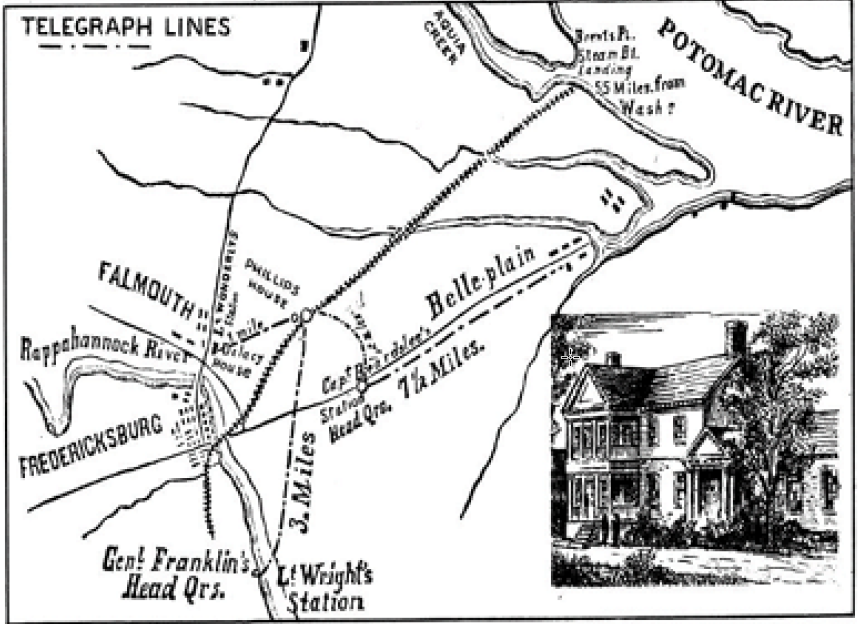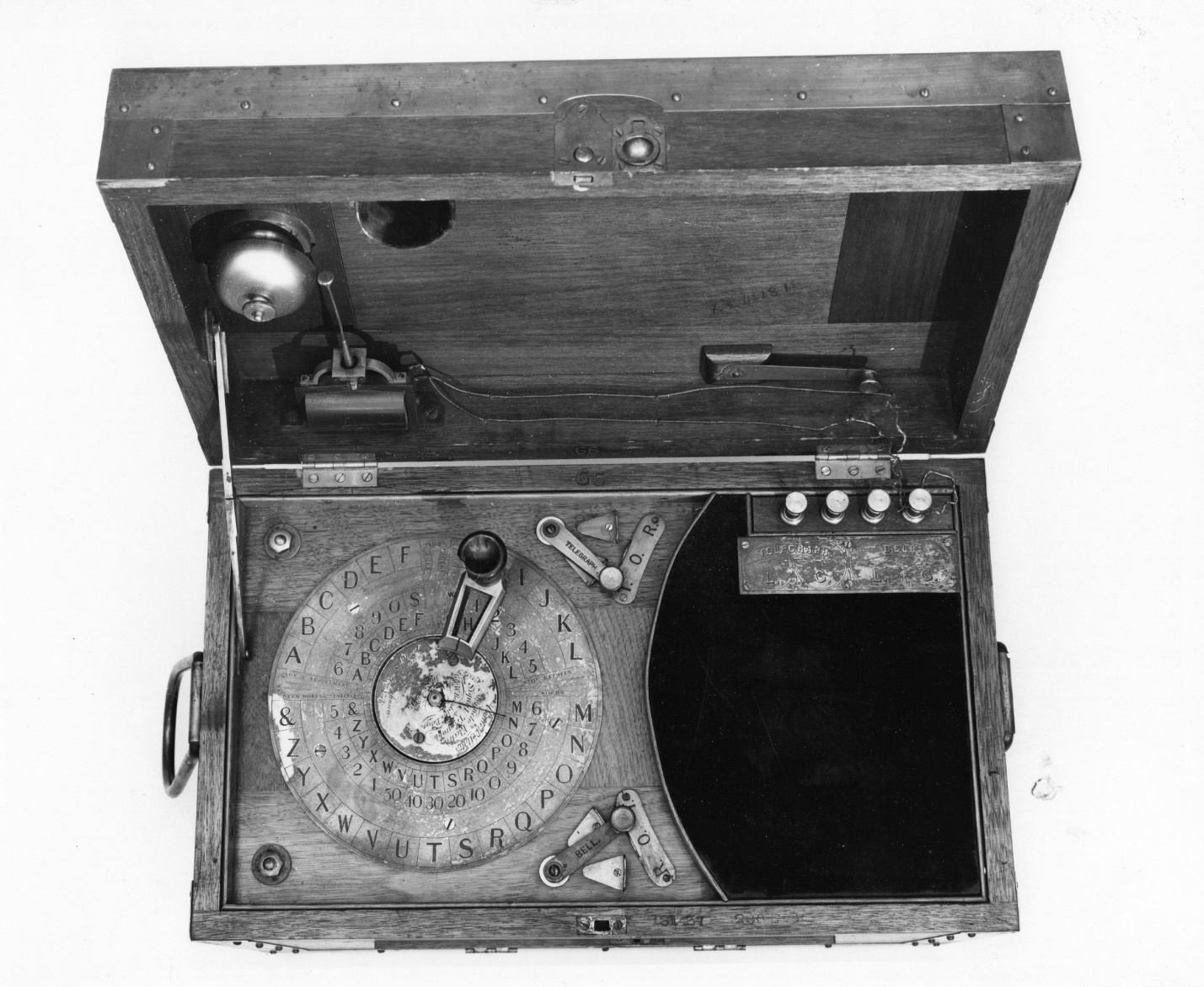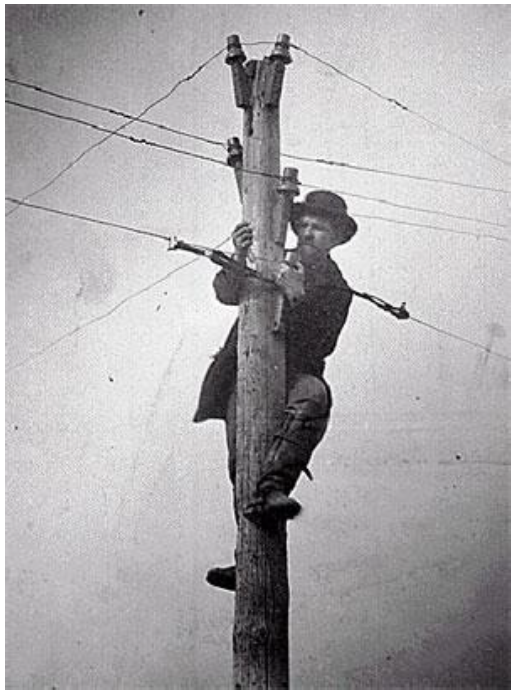Telegraph
On March 20, 1847, the Washington and New Orleans Magnetic Telegraph Company incorporated and began construction of a telegraph line between those two cities. The previous year lines had been run from New York to Washington. The company’s intention was to build the line along the railroad, though in some areas, such as Stafford, that proved impossible as until the 1870s the northbound tracks terminated at Aquia Landing. Through Stafford and Prince William counties, much of the telegraph line ran along what is now U. S. Route 1. This road was formerly called the Telegraph Road and some of the old sections of that road retain the name. Although a telephone system was established in Stafford in 1904, the telegraph system continued in widespread use until the 1940s as it offered a cheaper form of long-distance communication.
In the Civil War there was a different type of telegraph used in Stafford. During the Battle of Fredericksburg, Chatham functioned as a communication center. Telegraph lines connected General Burnside at the Phillips House (off of Highway 218) with his wing commanders including General Edwin Sumner at Chatham. They used the Beardslee Magnetic Telegraph. They thought this magnetic telegraph would be easier for the troops to learn how to use than the Morse Code Telegraph, for on the top of the machine was a dial which had the alphabet. In theory, the operator need only move the lever to a point on the dial representing the ‘letter’ he wished to send as part of his message. On the receiving end, the pointer would move to the corresponding position on the dial. Thus, the information was sent exactly as it was meant to be sent and, theoretically, without error. The operator need only copy down the characters he saw “dialed”.

Unfortunately, the Beardslee was not as promising as many had hoped. The machine required lots of maintenance, didn’t send signals as far as battery powered devices, and there was a slow rate of transmission. It was discovered that trained operators using a conventional telegraph system could send messages faster than operators using a Beardslee Machine. An actual Beardslee Magnetic Telegraph is on display at Chatham.



